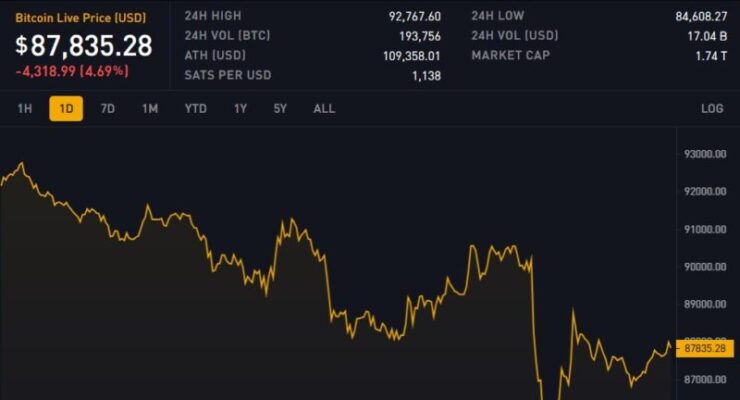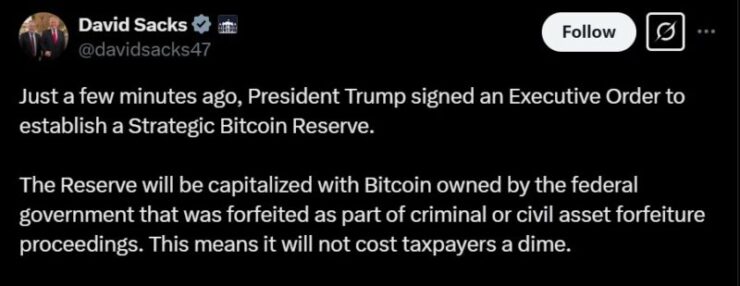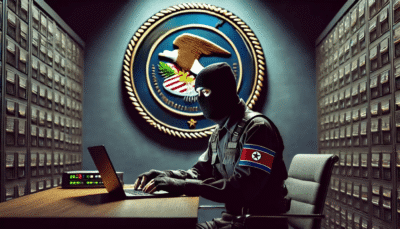Bitcoin’s price took a hit Thursday night after President Donald Trump signed an executive order to create a U.S. Bitcoin reserve and a digital asset stockpile, leading to a sharp drop in the cryptocurrency market. Bitcoin, which had been riding high earlier this week, slid 3%, falling to $87,586.86 from its previous highs, with a brief dip to as low as $84,688.13 following the announcement. Other cryptocurrencies that had rallied in anticipation of being included in the strategy also saw declines, with Ether down 2% at $2,184.08, XRP retreating 1% to $2.4, and Solana’s SOL token dropping 3% to $141. Cardano’s ADA token faced the brunt of the selloff, plummeting 13% to $0.83.

Trump’s Strategic Bitcoin Reserve: What We Know
President Donald Trump on Thursday, signed an executive order to create a government-backed Bitcoin reserve. This initiative positions the United States as a prominent player in the cryptocurrency market, aiming to bolster the nation’s digital asset holdings and influence
The executive order mandates the establishment of a “strategic Bitcoin reserve,” utilizing approximately 200,000 bitcoins seized through various law enforcement actions. These assets, previously acquired through criminal investigations, are now repurposed to serve as a store of value for the nation. The reserve is designed to function similarly to a “digital Fort Knox,” ensuring the preservation and security of these digital assets without the intention to liquidate them.
To oversee this initiative, the U.S. Treasury has established the “U.S. Digital Asset Stockpile,” responsible for managing the government’s cryptocurrency holdings. This move aligns with President Trump’s vision to position the U.S. as the “Crypto Capital of the World,” fostering innovation and leadership in the digital asset space.
The announcement from the White House crypto czar, David Sacks, revealed that the U.S. Bitcoin reserve would include over 198,000 bitcoins, worth approximately $17 billion, that the government had seized from past law enforcement actions. This move is being touted as a step toward enhancing U.S. control over Bitcoin without burdening taxpayers, as the government will not be purchasing additional bitcoins but will only hold those obtained through forfeiture proceedings.
Sacks also mentioned that the U.S. digital asset stockpile would include other cryptocurrencies seized in criminal or civil cases, though XRP, Solana (SOL), and Cardano (ADA) are not part of the stockpile of seized crypto, based on Arkham Intelligence data.

Investor Reaction to Short-Term Disappointment
The market’s reaction was swift and negative, with investors initially dumping coins after the news broke. Analysts, including Steven Lubka from Swan Bitcoin, pointed out that while the creation of a Bitcoin reserve is a positive step for the industry, it may not be the catalyst many were hoping for.
“It is good news, but not what the market wanted in the short term,” said Steven Lubka, head of private clients and family offices at Swan Bitcoin.
“People were hoping for near-term buy pressure.”
Sacks, however, emphasized that the U.S. Treasury and Commerce Secretaries are authorized to develop budget-neutral strategies for acquiring additional Bitcoin, as long as they do not incur additional costs to taxpayers.
Quick Facts:
- The U.S. government has established a Bitcoin reserve using over 198,000 seized bitcoins worth around $17 billion.
- Bitcoin saw a 3% decline after the announcement, with other major coins like Ether, Solana, and Cardano also experiencing losses.
- The reserve will not involve immediate Bitcoin purchases, leading to disappointment among some market participants hoping for near-term buy pressure.





